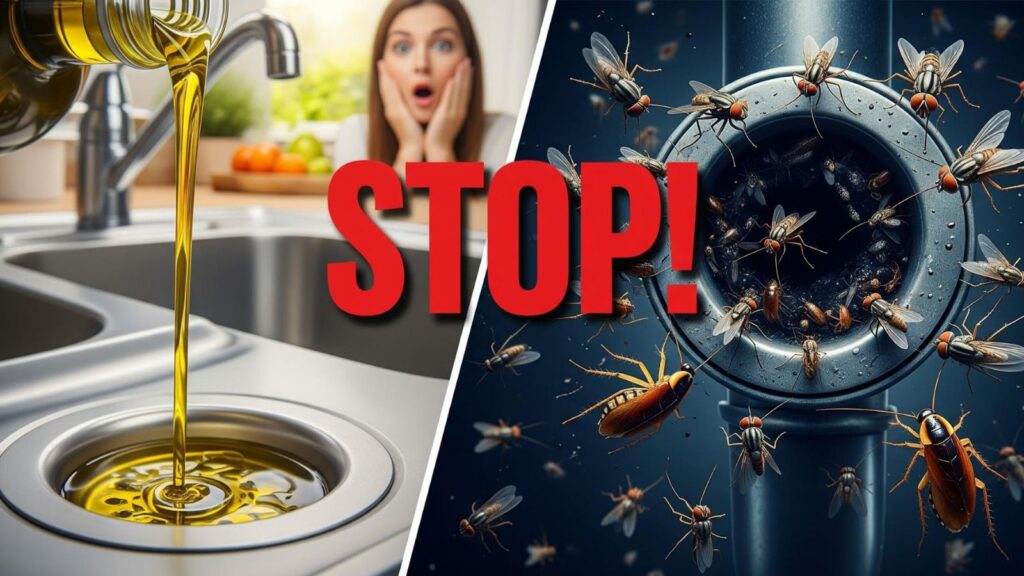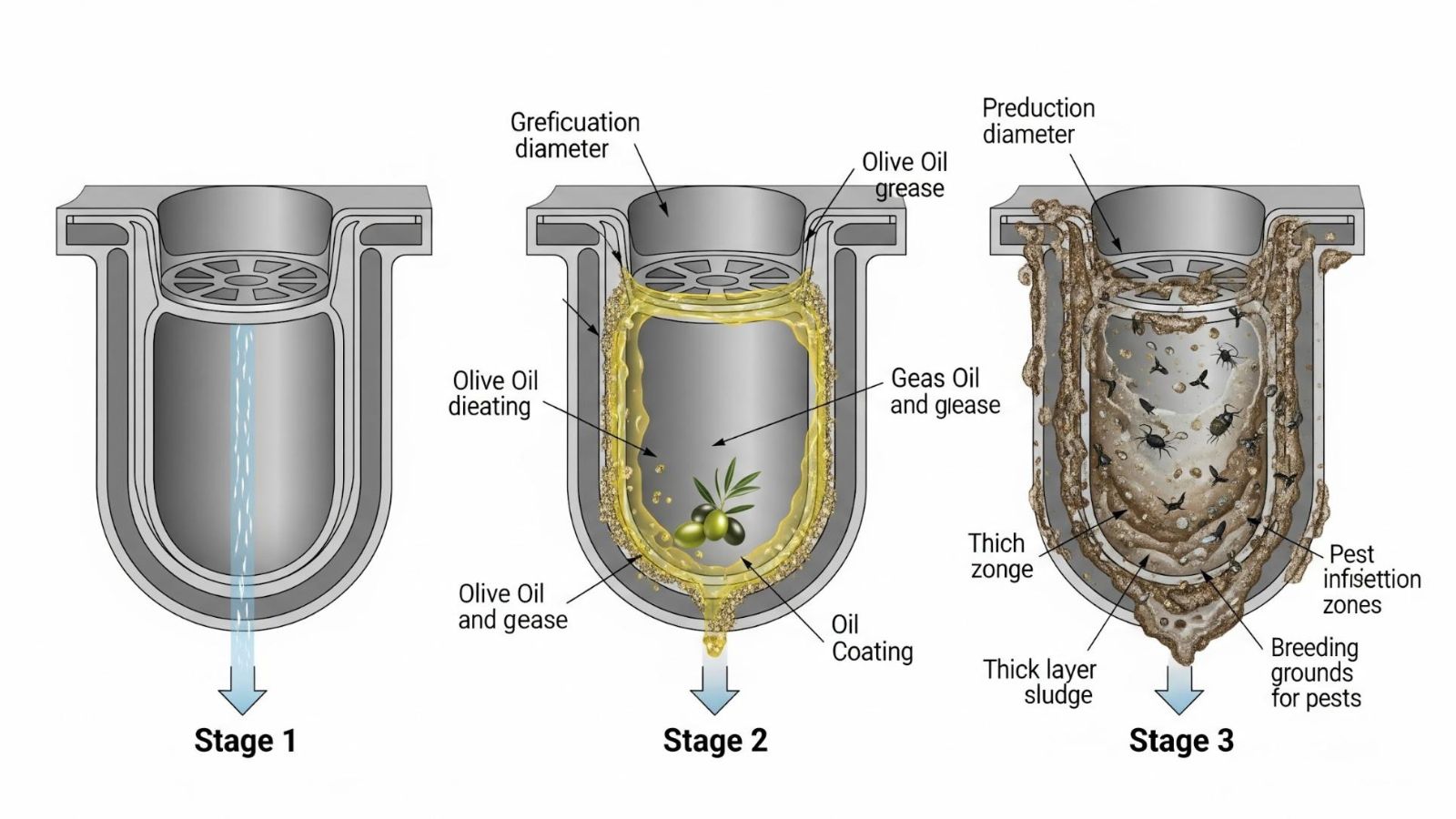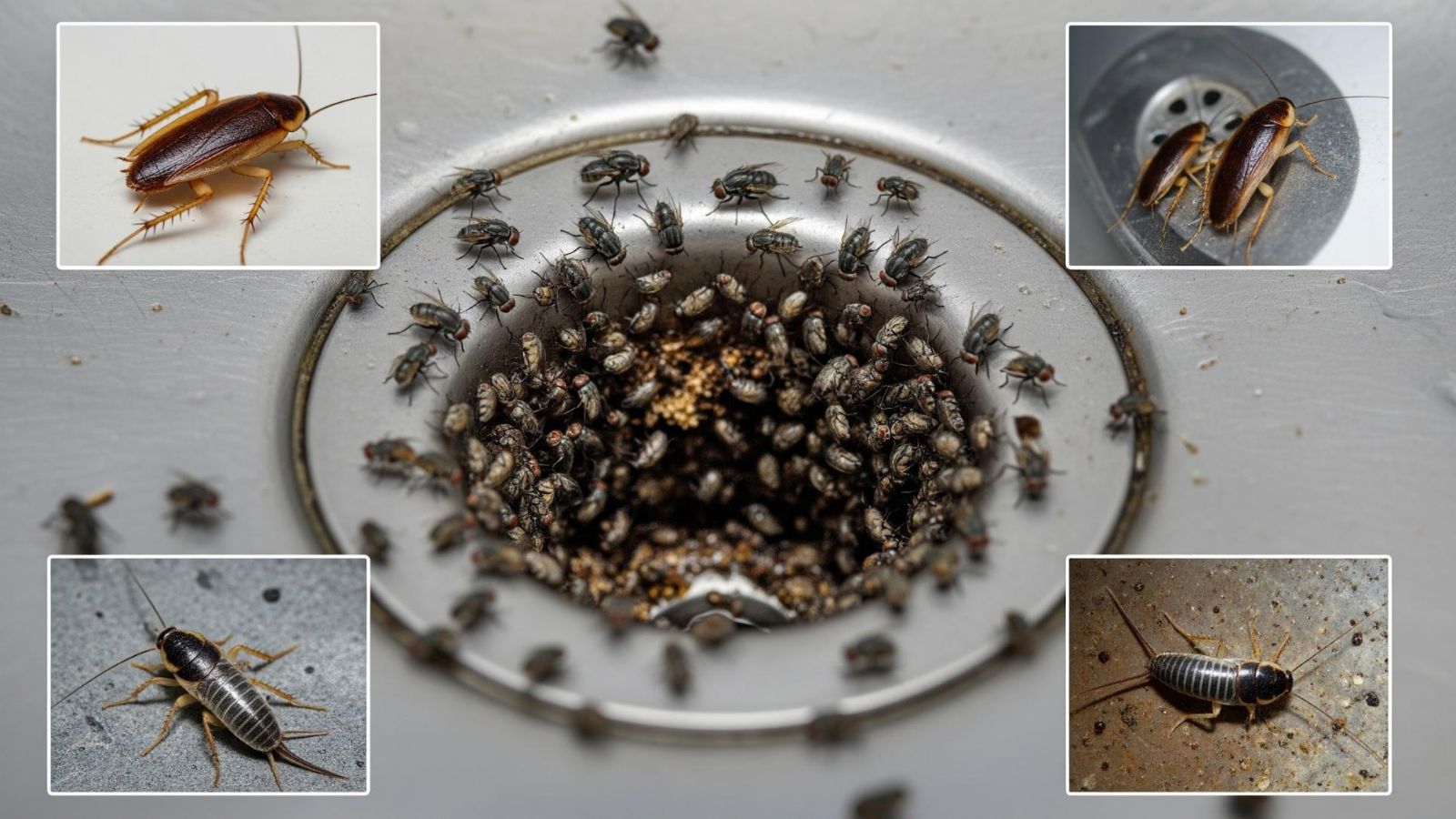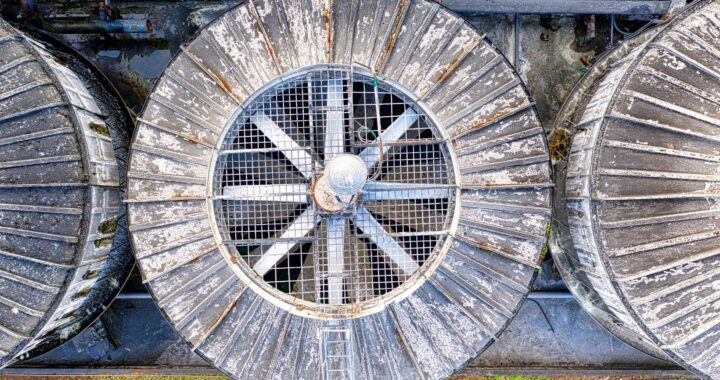What’s Destroying Your Drains and Attracting Pests: The Hidden Connection Every Homeowner Should Know

As a building systems specialist who has spent years researching the interconnected nature of home systems, I’ve discovered that improper disposal practices create both plumbing nightmares and pest infestations that could easily be prevented.
Three weeks ago, I received an urgent call from a frustrated homeowner asking, “Can you pour olive oil down the drain? I’ve been doing it for years, but now I have these tiny flies everywhere.” This question perfectly illustrates a costly mistake that connects two seemingly unrelated problems: damaged plumbing and pest invasions.
After fifteen years of diagnosing building system failures, I’ve discovered that what goes down your drain doesn’t just disappear, it creates conditions that attract unwanted visitors and cause expensive repairs. The relationship between improper disposal and pest problems is more direct than most people realize, particularly when it comes to essential home repairs that prevent bigger problems later that compound over time.
Understanding the Impact of Improper Disposal
When homeowners consider pouring cooking oils down their drains, they’re usually thinking about convenience, not consequences. The reality is that every substance you send down your pipes either helps or harms your entire plumbing ecosystem.
During my research into sustainable building practices, I’ve learned that natural water systems maintain their efficiency through constant flow and self-cleaning mechanisms. Our home plumbing systems, however, can become breeding grounds for problems when we introduce substances that disrupt these natural processes.
What Actually Happens Inside Your Pipes: The moment olive oil enters your drain, it begins a destructive process that most homeowners never see. As the oil travels through your pipes, it cools and begins to solidify, creating sticky deposits that trap hair, food particles, and soap residue. This organic buildup becomes the foundation for much bigger problems.
According to research from North Carolina State University Extension, approximately 10,350 to 36,000 sanitary sewer overflows occur annually in the United States, with about 47 percent attributed to fat and oil buildups. This staggering statistic represents not just municipal infrastructure problems, but thousands of individual homes dealing with backup disasters and pest infestations.
The Problem with Pouring Olive Oil Down the Drain
The science behind oil disposal becomes clear when you understand what happens after it leaves your sight. Unlike water, oils don’t break down naturally in your plumbing system. Instead, they accumulate, creating perfect conditions for both blockages and pest breeding sites.
The Progressive Damage Process: Initially, small amounts of olive oil might seem harmless. The oil mixes with hot water and appears to wash away cleanly. However, as it moves through your pipes and cools, it begins adhering to pipe walls. Over time, this creates a sticky coating that captures everything else flowing through your system.
I’ve used camera inspections to examine pipes in homes where residents regularly disposed of cooking oils down drains. The buildup resembles thick, dark sludge that significantly reduces pipe diameter and creates stagnant areas where water pools instead of flowing freely. This kind of damage often requires understanding essential home plumbing maintenance tips every homeowner should know to fully resolve.
The Pest Connection: These stagnant, nutrient-rich areas become ideal breeding sites for drain flies, also known as moth flies. These small insects complete their entire life cycle within your plumbing system, feeding on the organic matter trapped in oil residues. Female drain flies can deposit 30 to 100 eggs on the gelatinous film that forms in pipes, and their larvae mature in just 9 to 15 days.
For comprehensive moisture pest management strategies, professional services specialize in identifying and eliminating breeding sites that originate from plumbing problems.
Consequences of Clogged Plumbing and Sewer Systems
The implications of improper disposal extend far beyond simple inconvenience. What starts as a convenience issue quickly escalates into expensive repairs and health concerns that affect your entire household.
Immediate Household Impact: Clogged drains create standing water, which attracts various pests including cockroaches, silverfish, and drain flies. The moisture and organic matter provide everything these pests need to establish colonies within your home’s infrastructure. According to Michigan State University Extension, drain fly larvae can survive dramatic temperature swings and low oxygen levels, making them extremely resilient once established.
Municipal System Strain: When oil-clogged pipes from multiple homes combine in municipal sewer systems, they contribute to massive blockages called “fatbergs.” These solid masses can weigh several tons and cost cities millions of dollars to remove. More importantly for homeowners, they can cause sewage backups that result in costly property damage and health hazards.
Long-term Building Damage: Persistent clogs force water to find alternative paths, potentially causing pipe joints to fail, foundations to shift, and structural damage that far exceeds the cost of proper disposal methods. Understanding how to choose the right services for your home starts with recognizing these early warning signs.
Environmentally Friendly Disposal Methods
Rather than risking drain damage, homeowners should focus on sustainable disposal methods that protect both their plumbing and the environment. Through my work with green building initiatives, I’ve researched numerous eco-friendly alternatives that actually work in practice.
Cool and Solidify Method: The most straightforward approach involves allowing used olive oil to cool and solidify, then scraping it into compost or trash containers. This prevents pipe contamination while keeping oil out of water treatment systems.
Absorption Techniques: Coffee grounds, paper towels, and even cat litter can absorb small amounts of oil, making disposal safer and cleaner. These methods work particularly well for the residual oil left in pans after cooking.
Community Recycling Programs: Many municipalities now offer cooking oil recycling programs that convert used oils into biodiesel. This growing industry provides an environmentally beneficial alternative to traditional disposal while creating renewable energy resources.
Reusing Olive Oil in Cooking or Other Applications
Before disposal becomes necessary, consider whether your olive oil can serve additional purposes. This approach reduces waste while eliminating the temptation to pour oil down drains.
Safe Reuse Guidelines: Oil used for light cooking applications can often be strained and reused for similar cooking methods. However, oil that has been used for frying or cooking strong-flavored foods should be disposed of properly rather than reused.
Alternative Applications: Used olive oil can serve as a natural wood conditioner, lamp fuel for outdoor torches, or even as a base for homemade soaps. These applications extend the oil’s useful life while keeping it out of your plumbing system.
For homeowners dealing with existing drain problems, experienced plumbing professionals at MyPlumbingHeroes.com can assess damage and recommend comprehensive solutions that restore proper drainage while addressing any pest issues that may have developed.
Creative Solidification Techniques
When homeowners understand that oil disposal requires alternatives to drain dumping, they need practical solutions for disposal. Several innovative techniques make this process easier and more effective.
Using Cat Litter to Solidify Oil: Clay-based cat litter absorbs oil effectively, creating a solid mass that can be safely disposed of in household trash. This method works particularly well for larger quantities of used cooking oil.
Employing Coffee Grounds for Absorption: Used coffee grounds not only absorb oil but also provide a natural deodorizing effect. The combination creates compostable material that benefits gardens while solving disposal challenges.
Paper Towel Absorption: For smaller amounts of oil residue, paper towels can absorb and contain oil for safe trash disposal. This method works well for cleaning pans and cooking surfaces before washing.
Advanced Disposal Solutions
For households that regularly cook with significant amounts of oil, more sophisticated solutions may be necessary to prevent recurring disposal dilemmas.
Installing a Grease Disposal System: Some commercial-grade grease traps can be adapted for residential use, particularly in homes with serious cooking enthusiasts. These systems capture and contain oils before they enter your plumbing system.
Utilizing Fat Trapper Bags: Specialized disposal bags designed for cooking oil provide convenient, mess-free disposal options. These bags solidify oil and can be disposed of with regular household waste.
Maintenance Integration: The most effective approach integrates oil disposal into regular kitchen cleaning routines. By establishing consistent disposal practices, homeowners eliminate the temptation to use drains as convenient disposal methods. This approach aligns with the vital role of round-the-clock emergency plumbing services by preventing emergency situations altogether.
According to EPA waste management guidelines, proper disposal of cooking oils significantly reduces environmental impact while protecting municipal water treatment infrastructure.
Understanding the connection between drain health and pest problems empowers homeowners to make better decisions about disposal methods. When you know that pouring olive oil down your drain creates breeding sites for drain flies and attracts moisture-loving pests, the inconvenience of proper disposal seems minimal compared to the cost of professional remediation.
The next time someone wonders about oil disposal safety, you’ll know that the answer involves much more than just plumbing – it’s about maintaining a healthy, pest-free home environment through informed disposal practices.
For more information about maintaining healthy drainage systems and preventing moisture-related pest problems, consult with qualified professionals who understand the interconnected nature of building systems.




 www Rapid HomeDirect .com: The Ultimate Destination for Home Goods
www Rapid HomeDirect .com: The Ultimate Destination for Home Goods  Explosion-Proof Fans for Chemical Plants, Refineries, and Oil Rigs
Explosion-Proof Fans for Chemical Plants, Refineries, and Oil Rigs  Protecting Your Home from Neighborhood Noise Pollution
Protecting Your Home from Neighborhood Noise Pollution